Video Business Cards: Everything You Want to Know
According to a report from Small Business Trends, 72% of people judge a company or person based on the quality of their business cards. Sometimes traditional text and images may not be able to fully convey everything you want to include on your business cards. In that case, you can try video business cards, which provides a more engaging and dynamic introduction.
In this article, we’re giving you the lowdown on video business cards with all the important info you need to know; what it is, how to get started with your video business card, some pros and cons, and more!
1. What Is a Video Business Card
As the name suggests, a video business card is just a business card but in video format. It combines the elements of traditional business cards (contact details and branding) with multimedia content (videos and animations).
The main purpose of video business cards is to make a memorable first impression by conveying essential information quickly and effectively, such as personal’s skills, achievements, and products/services. People remember only 10% of what they read but 50% of what they read and hear, so compared with paper business cards, video business cards can increase the marketing and networking efficiency.
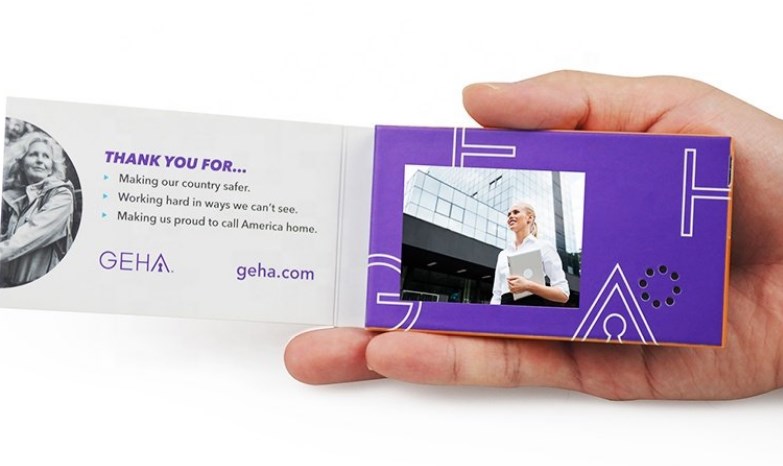
image from mocmm.com
Typically, a video business card ranges from 30 seconds to 1 minutes, depending on the complexity of the message.
Talk is cheap, but a video that showcases your ideas and brand with tangible evidence can effectively break the ice and convert leads into sales organically and passively. The video doesn’t need to be too long either and should range between a minute or two.
2. How to Create a Video Business Card
Now comes the part to actually creating and recording a video business card. We’ll give you the gist of how you can get started but keep in mind your brand’s strong points and unique propositions to insert into the video.
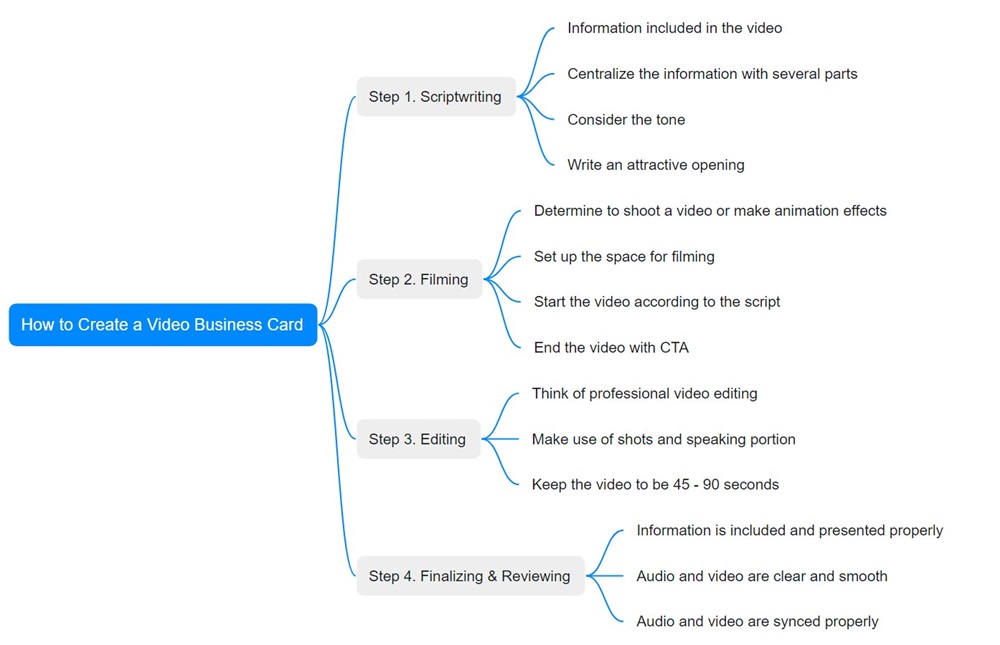
Step 1: Scriptwriting
The first step is to start creating a plan of action.
1. Think about what kind of things you want to mention in the video, your business’s unique selling points, what you’re going to say, and how the overall video will look.
In my experience, I would usually split the video into several parts with essential information, so that it looks instructional.
2. In general, you should consider the ‘tone’ of the video and that it matches your brand identity. Do you want to come off as friendly and approachable, or serious and knowledgeable? Depending on your business, select a tone and stick to it to further bolster your brand’s identity and style.
3. An attractive opening of a video is crucial, determining whether would continue watching or closing the video. Consider engaging questions or visual hook in the beginning.
4. Make sure to include all the relevant information about your business or yourself. Such as your personal experience, your company’s backstory, what products and services you offer, etc.
Step 2: Filming
For the next step, you’re going to start the filming process.
1. Before you start filming, make sure if you want to shooting the video or make animation effects. This depends on the branding or industry you want to showcase.
For instance, Animators are recommended to make a video business card through animation effects.
2. In most cases we would recommend take a real filming. Make sure you’ve got an idea of where you want to shoot. Clear up the space and make it look presentable.
3. Once you’ve got your ‘main’ shot, start the video by introducing yourself and your business. Then proceed with the script whether it’s an overview of your services, a product showcase, etc.
4. End the shoot by including a ‘call to action’ and mention relevant contact details like a phone number, email, or social media accounts.
5. Include establishing shots of your business and operations. For example, if you’re an F&B business, showing how the food is prepared, your facilities, footage of waitstaff, and your restaurant is an integral part of the video.
This way not only do you provide more ‘action’ for the viewers to stay engaged with your video business card, but you also get to showcase your products and services in an effective and straightforward manner.
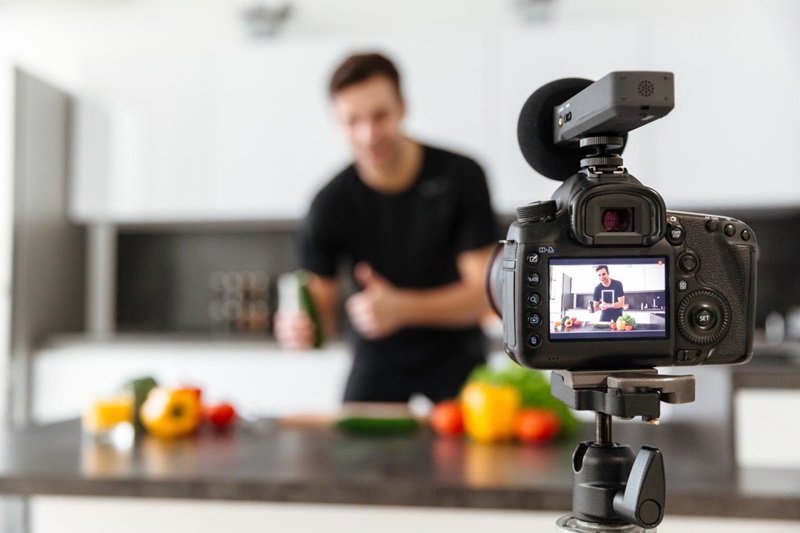
Step 3: Editing
The next step is to edit the video and splice everything together.
1. For this step, we’d recommend hiring a video editor or outsourcing it to professionals, since it can be a bit too complicated to create a quality video business card with no experience.
There’s a lot you need to edit from the coloring, audio sync, any effects, transitions, and more. But the most important thing is the video looks presentable and accurately captures the essence of your brand identity.
2. Make good use of your establishing shots dubbed with your speaking portion of the video to relate to what you’ve mentioned. For example, if you’re speaking about your business’s facilities, add in a shot of said facilities.
3. Lastly, keep the video short & sweet since you don’t want it to be too long. Around 45 - 90 seconds is a good benchmark for a video business card.
Step 4: Finalizing and Reviewing
The last step to create a video business card is to finalize and review it. Watch the video from start to end to get an overall impression.
1. Ensure all the necessary information is included and presented accurately.
2. Ensure the audio is clear, at the right tone/volume, and free of backgrounf noise.
3. Verify the audio and video are synchronized and smooth.
4. Invite someone else to watch the video business card and see if he/she catches the essence.
After that, your video business card is done!
3. Pros and Cons of Video Business Cards
In this part we will outline the benefits and limitations of video business cards.
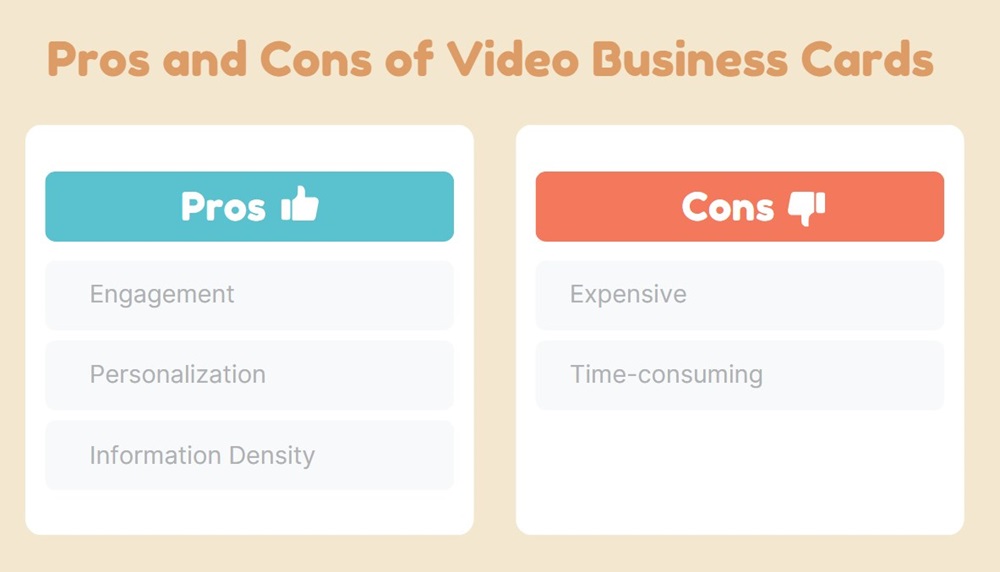
Pros of Video Business Cards:
1. Engagement
The biggest advantage to a video business card is how it keeps your viewers engaged. Videos capture attention more effectively than text-based mediums, providing instant access to relevant information.
With a lasting impression, they’re more likely to reach out for your services, effectively converting leads.
2. Personalization
Video business cards are extremely personalizable. You can tailor-make the content to accurately reflect your brand’s personality, values, and unique selling points. Adding this personal touch helps build lasting and strong connections with your audience since they see and hear from the person behind the business.
3. Information Density
If a picture is worth 1000 words, then a video is worth 10x more. With a video, you can pack in a lot of information in a short period, something other business card mediums aren’t able to do.
When you mix in the information with a combination of engaging visuals and audio, your viewers will receive a comprehensive understanding of your business in as little as time possible.
Cons of Video Business Cards:
1. Expensive
While a video business card is a convenient and effective method of networking, the entire process of getting it together is expensive. If you really want a professional-looking video, you’re going to need to rent equipment like high-resolution cameras, microphones, lighting, tripods, etc.
Comparing the cost of creating a video business card versus a free digital business card app or printing a paper business card, the appeal is a little less enticing.
2. Time-consuming
The process of creating a video business card is time-consuming. It requires careful planning, scripting, scouting, and preparation even before you start filming. Not to mention to produce a polished final product, the filming and editing process will require significant time.
That’s not taking into account any revisions, changes, or reshoots you may need.
4. Use Cases of Video Business Cards
For Businesses
Networking Events: At networking events, a video business card can make a lasting impression compared to traditional paper cards.
Conferences and Trade Shows: Speakers can use video business cards at the booth to attract and inform visitors.
Sales and Marketing: Sales teams can use video business cards to showcase products or services in a more vivid way.
For Individuals:
Job Applications: Video business cards are helpful for job seekers to introduce their skills, experience, and working results.
Freelancers: Freelancers can use video business cards as an engaging portfolio to present their past projects.
Educational Purposes: Educators can introduce themselves and their courses to potential students.
5. The Future Trend of Video Business Cards
Video business cards are an interesting proposition for any working professional, but it’s not without its flaws. For insttance, you can’t update it with more timely information or make changes or showcase your new products or services, unless you spend more time and money filming another video.
So, how do you keep your business cards with information density and engagement, while cut the cost (time and budget) down and update the information in real time? Well, an interactable AI business card bot is what you need.
ChatInsight AI Business Cards provide users with a quick and easy want to create business cards by leveraging the power of the latest AI innovations.
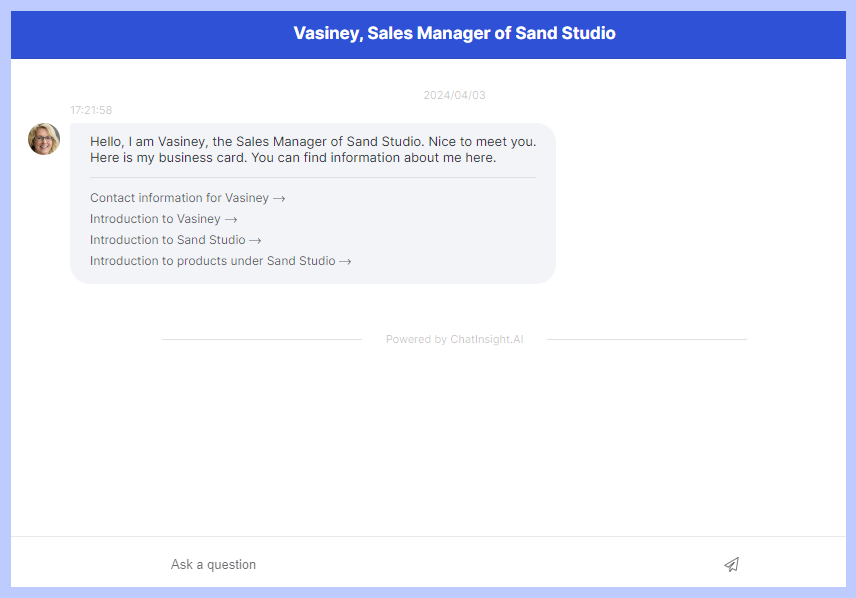
Key Features:
- A powerful AI assistant to handle all customer queries and answer FAQs.
- It allows you to make any relevant changes and have it reflected in real time!
- It will keep track of your conversations to collect contact preferences and other engagement metrics.








Leave a Reply.